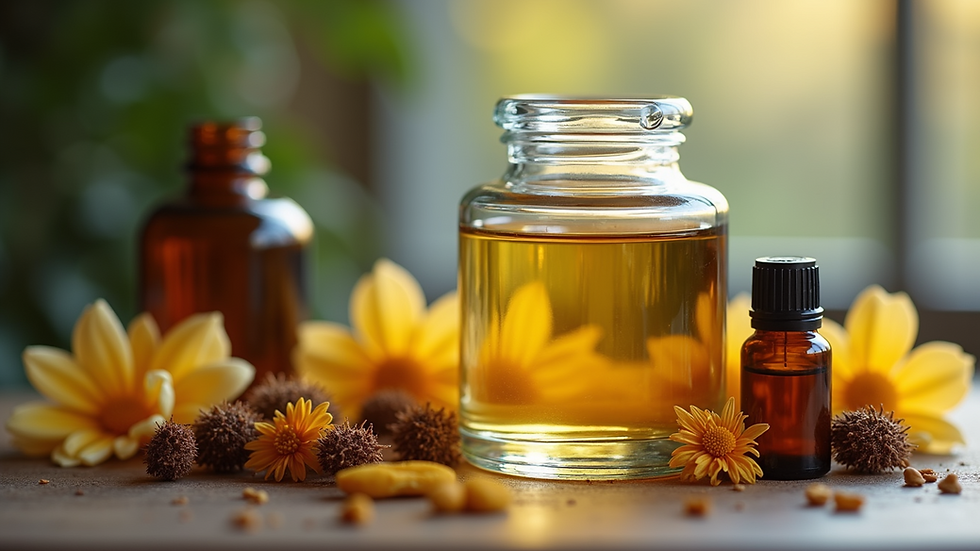Unlock Your Creativity with Perfumery Grade Ethyl Alcohol for Perfect Scents
- subalaoffice
- Jul 19
- 4 min read
Creating your own personal fragrance is an exciting way to express who you are. It's not just a fun project; it offers a unique opportunity to blend scents that resonate with your personality. With the right ingredients, anyone can step into the world of perfumery, and perfumery grade ethyl alcohol is a fantastic starting point. This high-quality, versatile alcohol allows for endless creativity in crafting unique scents.
In this post, we will explore the advantages of using perfumery grade ethyl alcohol, its practical applications, and tips to help you tap into your creative potential in the world of fragrance.
What is Perfumery Grade Ethyl Alcohol?
Perfumery grade ethyl alcohol is a specific type of alcohol used in fragrance creation, known for its high purity—typically 99.9%. This high level of purity is crucial for capturing and maintaining the true essence of fragrance oils or essential oils mixed in. Choosing this quality alcohol ensures that your DIY perfumes are not only clean and long-lasting but also true to your intended scent profile.
Additionally, the alcohol acts as a carrier, helping fragrant compounds disperse effectively for a more intense scent experience. In essence, perfumery grade ethyl alcohol is the backbone of your creations, allowing you to focus on crafting beautiful fragrances with confidence.
Why Choose Perfumery Grade Ethyl Alcohol?
1. Clean Fragrance Foundation
Commercial perfumes often contain synthetic ingredients that can alter the scent experience. By using perfumery grade ethyl alcohol, you guarantee that your fragrances deliver pure notes. For example, you can create a sophisticated floral scent that vividly captures the essence of jasmine and rose without the interference of synthetic additives.
2. Versatility
Whether you’re a beginner or experienced perfumer, perfumery grade ethyl alcohol accommodates all skill levels. An easy blend for beginners could involve combining lavender and bergamot essential oils to create a fresh scent. For the more advanced user, explore complex notes like patchouli or sandalwood to craft deeper, woody fragrances that can change with time.
3. Cost-Effective Option
Investing in perfumery grade ethyl alcohol offers value. With competitive pricing, including promotions such as a 25% discount, purchasing a 5-liter bottle grants you ample supplies for numerous creations. This equates to mixing and testing dozens of unique blends without overspending.
Tips for Using Perfumery Grade Ethyl Alcohol
1. Start Simple
If you're new to making perfumes, begin with a few essential oils mixed with the alcohol. A basic blend might combine lavender, orange, and patchouli to create a balanced aroma. This simplicity allows you to understand how different oils interact and evolve, providing a strong foundation for more complex creations later.
2. Measure Accurately
Precise measurements are vital for achieving a balanced scent. For most blends, a standard ratio of 70% alcohol to 30% essential oils works well. Utilizing a simple scale ensures consistency in your experiments, leading to more predictable results.
3. Let It Mature
After creating your blend, let your perfume mature. Store it in a dark place for at least two weeks, shaking it every few days. This maturation process allows the components to meld, enhancing harmony in the fragrance. Many experienced perfumers agree that allowing a scent to age can improve its complexity and charm.

4. Experiment with Notes
Dive into fragrance notes. Get familiar with top, middle, and base notes. For instance, combining the citrus zing of bergamot (top note) with the floral essence of jasmine (middle note) and the earthiness of vetiver (base note) creates a well-rounded scent. Experimenting with these layers enhances scent depth and longevity.
Crafting Your Signature Scent
Feel equipped to create your own signature scent? Here’s a simple guide to help you start your journey:
Choose Your Theme: Determine what type of fragrance you want. For example, if you're leaning toward a warm scent, consider spices like cinnamon or clove.
Select Your Oils: Identify essential oils that fit your theme. For a fruity fragrance, you might choose oils like grapefruit, peach, or strawberry.
Mix and Test: Use perfumery grade ethyl alcohol to mix oils in small test batches. Document the combinations, noting what works well and what doesn’t.
Record Your Processes: Keep a detailed log of your experiments. By noting ratios and combinations, you can recreate your successes or adjust less satisfying blends in the future.
Engaging with the Craft
One of the best parts about perfume-making is the community. Join forums, attend workshops, or connect with fellow enthusiasts to exchange tips and feedback. Engaging with others inspires new ideas and enhances your understanding of scents and techniques.
Final Thoughts
Unlocking your creativity through perfumery offers both a sense of fulfillment and a chance to express your unique style. Perfumery grade ethyl alcohol acts as a key ingredient in this journey, giving you a clean, versatile, and cost-effective base for exploration.
As you create your signature scents, remember to enjoy the process. Experiment, learn from each creation, and let your imagination guide your blends. The world of fragrances is vast, and each bottle you create is a step toward refining your olfactory identity.
Using high-quality ingredients like perfumery grade ethyl alcohol sets the stage for beautiful, personalized fragrances that truly reflect you. Happy blending!





Comments